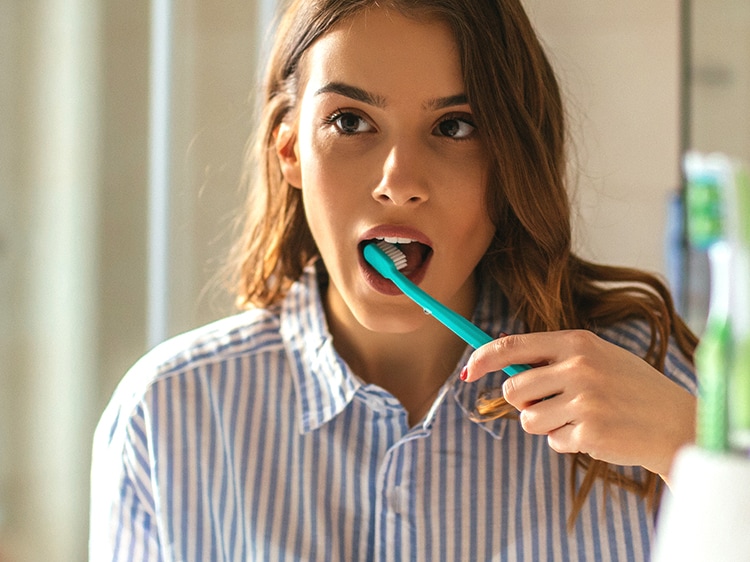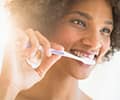Brushing with an abrasive toothpaste removes dental plaque and stains from your teeth. But there are potential downsides to a toothpaste that is too abrasive for your specific mouth. Let's go over signs your toothpaste or oral care routine is harming your tooth's enamel, as well as how to find the right toothpaste perfect for your smile!
The Dangers of Tooth Enamel Abrasion
Enamel, the outermost layer of our teeth, is the toughest substance in the human body. Still, rigorous brushing, using a hard-bristled toothbrush, and abrasive toothpaste can wear your enamel down. Acid erosion from acidic foods or drinks, gastrointestinal disorders, and eating disorders can also wear the enamel away, leaving your teeth vulnerable to decay.
Although enamel is strong, like bone, it's unable to grow back. So it's essential to protect it as best you can and catch signs of enamel abrasion as early as possible. When your enamel wears, it can lead to sensitivity by exposing the thin dentin layer underneath. Have you ever winced from a burst of sharp pain after sipping something very hot or cold? That's probably due to a bit of enamel wear. Overbrushing and using a toothpaste that is too abrasive for your teeth are both habits you have the power to change. It's time to adjust your brushing habits or change your toothpaste if you notice the following signs:
- Notches in your teeth where they meet the gum
- Gum recession that exposes the tooth roots
- Tooth or gum sensitivity
- Pain when you brush or eat hot or cold foods
- Yellow or gray teeth
Toothpaste Abrasiveness
Did you know that abrasives in toothpaste have been studied since 1907? According to a review in The Journal of Clinical Dentistry, understanding the limits of abrasivity is still an important area of study in dentistry. While using a toothpaste that is too abrasive is only one of the causes of enamel abrasion, it is one of the most preventable. So why not get to know the resources available to help you make the safest decision when choosing your next toothpaste?
The Relative Dentin Abrasivity (RDA) scale, developed by the American Dental Association, assesses toothpaste abrasiveness against a standard measurement. The higher the RDA score, the more abrasive the toothpaste. To receive the American Dental Association's Seal of Acceptance, a toothpaste's Relative Dentin Abrasivity (RDA) cannot exceed a score of 250. This cutoff aims to ensure that you can spend a lifetime brushing with this specific toothpaste, and it won't cause significant damage to your enamel. That's a pretty informative tool for an everyday product that might not cross your mind often!
How to Check the Abrasiveness of Toothpaste
The best way to avoid using an excessively abrasive toothpaste is to look for the American Dental Association's Seal of Acceptance on the package or tube. Numerous scientific studies that compare various toothpaste brands' abrasiveness are available, like this 2016 study published in BMC. Even if the RDA rating isn't noticeable on your toothpaste package, you can look it up online.
Common abrasive ingredients in toothpaste are derived from chalk and silica. The Dental Health Foundation also notes that toothpaste designed for smokers usually has strong abrasives, as yellow teeth are a common symptom of smoking. Even for non-smokers, toothpaste intended to whiten teeth or remove stains are more abrasive than non-whitening toothpaste.
We recommend brushing gently with a soft-bristled toothbrush and a toothpaste that carries the ADA's Seal of Acceptance. Suppose you already have weakened enamel or need a gentle toothpaste because of an injury or surgery. In that case, your dental professional can help you choose a low-abrasive toothpaste or even a non-abrasive toothpaste.
There's no doubt that a stain-free, pearly white smile is a confidence boost. And while your mouth may feel smooth and clean and your breath fresh after brushing, it's crucial to look into how abrasive your toothpaste is. There's no reason to end up with thin enamel and sensitive teeth when you work so hard to keep your smile healthy. Let that hard work pay off!
This article is intended to promote understanding of and knowledge about general oral health topics. It is not intended to be a substitute for professional advice, diagnosis or treatment. Always seek the advice of your dentist or other qualified healthcare provider with any questions you may have regarding a medical condition or treatment.
ORAL HEALTH QUIZ
What's behind your smile?
Take our Oral Health assessment to get the most from your oral care routine
ORAL HEALTH QUIZ
What's behind your smile?
Take our Oral Health assessment to get the most from your oral care routine
Join Us
Get the best of your oral health routine and take it to the next level with expert advice, recommendations, products and solutions and special offers.
Join Us
Get the best of your oral health routine and take it to the next level with expert advice, recommendations, products and solutions and special offers.












.png)


